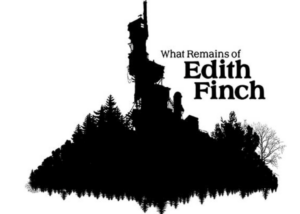
“What Remains of Edith Finch,” developed by Giant Sparrow and available across various platforms such as iOS and PC, is a game that exemplifies how walking itself can become a profound narrative force. The core premise of walking simulators—walking as a primary interaction—serves as more than mere traversal in “What Remains of Edith Finch.” Each step taken by the player as Edith Finch explores her eerie, abandoned family home does not just move her physically but deepens the narrative immersion, uncovering layers of personal and familial history. This approach uses the act of walking to engage players directly with the story, making the environment a silent narrator of the Finch family saga.
“What Remains of Edith Finch” leverages its environment masterfully, turning every nook of the Finch house into a storybook page. However, while the game’s varied storytelling techniques—ranging from comic-book sequences to first-person puzzles—distinguish each family member’s tale, this variety could sometimes detach players from the cohesive emotional tone of the game. A suggestion for improvement could be to integrate subtle recurring elements in these sequences to enhance thematic continuity.
Compared to other walking simulators like “Dear Esther,” which relies heavily on atmospheric narrative and voiceovers, “What Remains of Edith Finch” introduces interactive flashbacks that vary dramatically in gameplay style. This not only maintains engagement but also enriches the player’s emotional investment. Unlike “Gone Home,” which sticks to realism and a single continuous narrative style, Edith Finch’s fantastical elements provide a surreal contrast that highlights the poignant realities of the stories told.
Drawing on the Mechanics-Dynamics-Aesthetics (MDA) framework from game design theory, the mechanics in “What Remains of Edith Finch”—primarily walking and interacting with objects—generate a dynamic of discovery and emotional connection, leading to an aesthetic experience that is both introspective and haunting. The game could further benefit from exploring these mechanics to deepen player interaction, perhaps by allowing more environmental manipulation which could lead to new narrative revelations.
One of the most striking examples occurs during the segment about Lewis Finch. The player guides Lewis through his monotonous job at a fish cannery. To the left of the screen, you control Lewis’s hands as he beheads fish—repetitive, simple motion symbolizing his mundane reality. Simultaneously, to the right, you navigate a vibrant, ever-growing fantasy kingdom where Lewis is the protagonist of his own story. This dual-task gameplay not only visually represents Lewis’s split focus between his dreary work life and his rich inner world but also makes the player feel the stark contrast through the act of playing. The mundane and the magical are literally at your fingertips, and as you walk through his mental and physical paths, you experience his escapist descent which tragically leads to his demise.
This gameplay mechanic profoundly connects with the central argument that walking simulators use movement to tell their stories. In Lewis’s case, the act of walking through his fantasy world becomes a narrative about escapism and loss. The player’s physical engagement—controlling his routine task with one hand and his fantasy with the other—mirrors his psychological journey, making the story’s impact more visceral and poignant.
Ultimately, “What Remains of Edith Finch” transforms walking from a simple mechanic into a powerful narrative tool, making it a pivotal example of the potential depth and emotional resonance in video games. By integrating walking with interactive storytelling, the game invites players not just to observe a story, but to participate in it, making each player’s journey through the Finch house uniquely touching. This game not only narrates a story—it lets you walk through it, literally and metaphorically, proving that in the world of walking simulators, the journey is just as significant as the destination.



